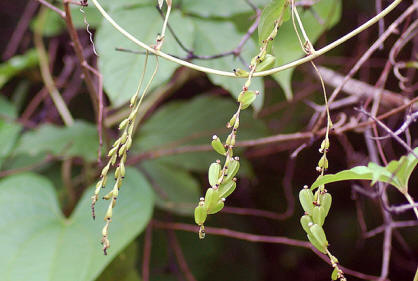Interactions
Like all other organisms, Dioscorea villosa L. is involved in
numerous symbioses. Fortunately for both the wild yams and its
neighbors in the same habitat, most of its interactions are
mutualistic; this means that both the wild yam and the fellow
organism benefit positively.

Within the phylum of fungi, Glomeramycota, there are multiple
organisms which create mycorrhizal symbioses with plants. These
Glomeramycota fungi live within the roots of plants, including
the wild yam, by penetrating the cell wall of the cells. The
cell membranes of the plants are not broken; instead, the
membranes are used as a wall for diffusion. The two organisms
(the fungus and the wild yam in this case) then exchange
nutrients the other cannot gather well. The yam can offer sugars
formed in photosynthesis while the fungus has an abundant amount
of nutrients it receives from the soil.
Dioscorea villosa L. also takes advantage of animals for pollinating other plants. Wild yams need some way to pollinate other plants since all plants in the order Dioscoreales are dioecious (they have different sexes). Wild yams take advantage of flies that land on them by covering them in pollen. Chances are that one of the right flies will land on the right spot of another wild yam flower and end up pollinating it.
Many other important organisms are involved in similar
mycorrhizal symbioses with fungi for nutrients including:
tobacco,
the stonebreaker plant, and
the sweet orange.
Previous Page ---- Home ---- Next Page
